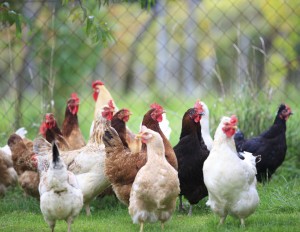A major disease event for poultry has landed in the U.S. Highly-pathogenic avian influenza has been detected in a number of states, and while the brunt of the impact has been in the Midwest, and our thoughts are with those poultry farmers, the disease hasn’t been limited to that region. There have been additional detections here in the west, including California. This may already be the largest bird flu event in U.S. history. Fortunately, this virus strain is not threatening human health and it will continue to be monitored closely by the Centers for Disease Control.
So far, more than 120 commercial poultry farms have been infected, largely by migrating waterfowl, although there has also been some farm-to-farm spread. Keeping those risks in mind, veterinarians and poultry producers in California continue to be on high alert for the disease by employing monitoring and testing procedures. Because this virus does not do well in hot, dry climates, California may get a break this summer as we face the challenge of ongoing drought, but it is something to keep a close eye on as we move into the typical winter flu season for California poultry. We are hoping for the best, but preparing for the worst.
In the meantime, commercial as well as backyard poultry operations are urged to follow strict biosecurity measures, such as:
1) Do not share birds, equipment or feed with other bird owners.
2) Restrict access to your birds; visitors may carry disease on their clothing or shoes.
3) Isolate new birds from your other birds for 30 days
and observe them for signs of illness.
4) Keep wild birds away from your birds, particularly wild waterfowl (ducks).
Disease prevention means doing everything possible to protect poultry by reporting signs of disease–particularly large, unexpected die-offs–to your veterinarian and CDFA. The virus spreads rapidly, so immediate detection and reporting is critical to limiting spread.



